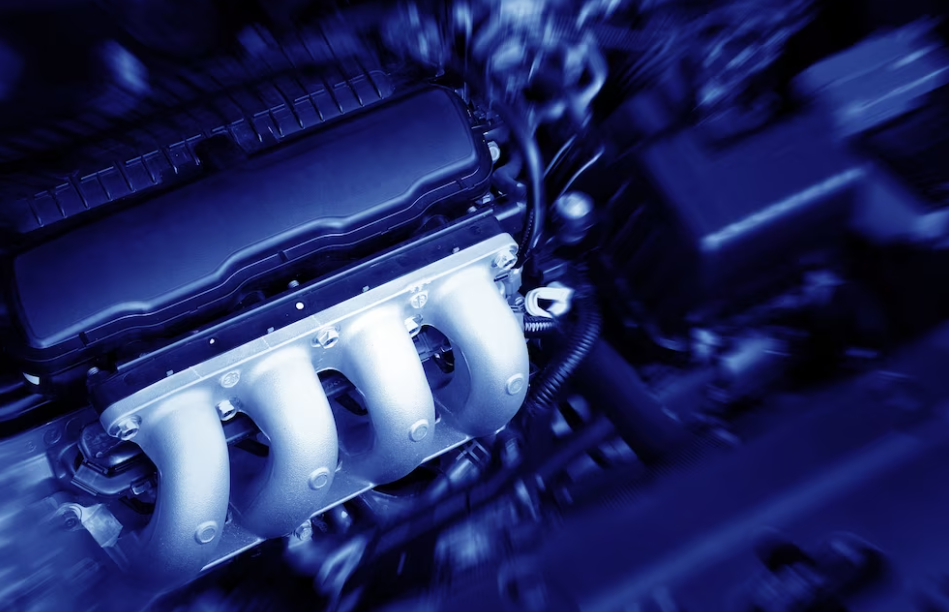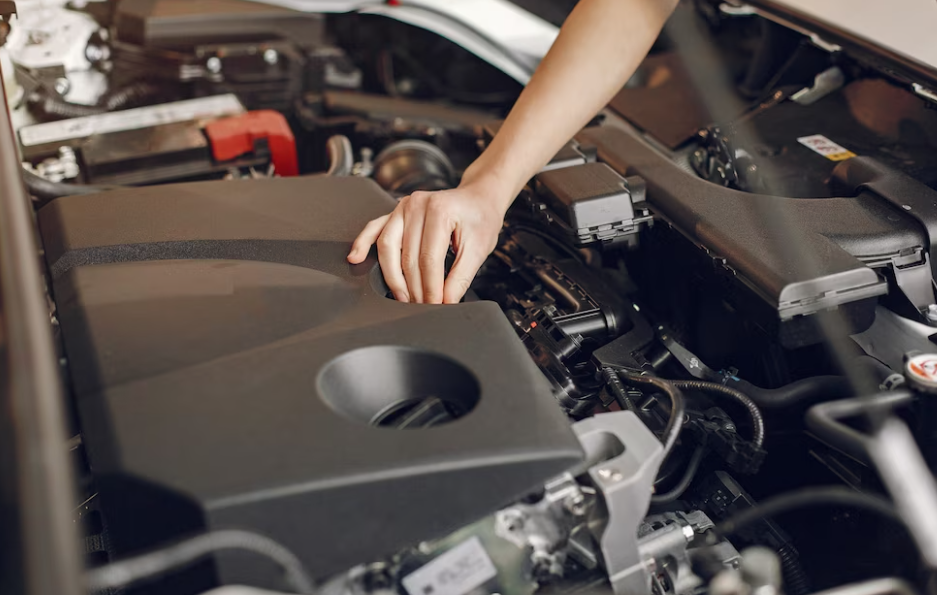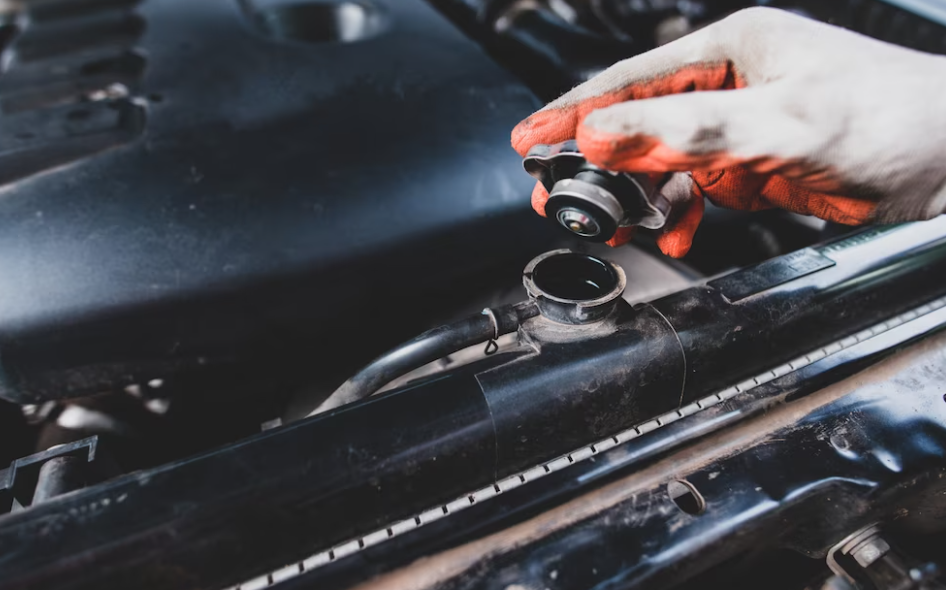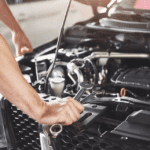
Car Detailing Engine Bay can be a daunting task. It requires attention to detail, patience, and the right tools. Taking the time to clean and maintain your vehicle’s engine bay properly will help extend its life and keep it running in top condition.
In this article, we’ll show you how to go about cleaning and detailing your engine bay so that you can drive with confidence knowing your car is in peak condition.
The engine bay is one of the most essential parts of any vehicle, yet it’s often overlooked when it comes to detailing. To keep your car running smoothly and looking great, giving the engine bay some extra TLC every so often is essential.
This guide will provide tips on how to clean and detail your engine bay quickly and efficiently. We’ll also explain why regular maintenance is essential for keeping your car running optimally for years to come.
1. Preparing The Engine Bay

Engine detailing is the perfect way to give your car a fresh and polished look. Before you begin, it’s important to ensure you have all the necessary supplies and parts ready, such as rags, degreaser, gloves, and any parts or accessories you plan on installing.
When detailing an engine bay, the first step is to carefully remove any dust and dirt from the surface. You can do this by wiping down with a rag that has been dampened with water or degreaser. Be gentle and don’t use too much pressure when cleaning, as this can damage sensitive electrical components.
Once you’ve removed all the dirt and debris from the engine bay, it’s time to start upgrading parts or installing accessories. This could involve replacing old hoses and belts to adding new lights or air filters.
Take your time to ensure everything is fitted correctly before moving on to the next step in your detailing process.
2. Cleaning The Engine Bay
Now that the engine bay is prepared, it’s time to get to cleaning. This can be a tricky task as it involves polishing components, removing grime, and ensuring everything looks brand new.
Here are some tips for cleaning the engine bay:
- Before you start, check the manual for specific instructions on how to clean different parts of your car.
- Make sure you use a quality, non-abrasive cleaner, and soft cloths or sponges for polishing components.
- Take your time when cleaning, and pay particular attention to areas with built-up grease and grime.
After spending time thoroughly cleaning each component, you can enjoy the fruit of your labor in seeing a sparkling clean engine bay!
3. Protecting The Engine Bay

Protecting the electrical components is an essential step in car detailing. It should not be overlooked, as it helps prevent corrosion that can occur over time due to extreme weather and temperature changes. Additionally, adding insulation will help keep the components from getting too hot or cold.
When protecting the engine bay, use a rust-inhibiting primer on all surfaces that are exposed to air and moisture. This will help to prevent rust from forming on any exposed metal parts. Additionally, you should use an anti-corrosion coating to seal up any areas that may be prone to rusting quickly.
Finally, you can add insulation around the various components of the engine bay in order to keep them at a more consistent temperature. This could include anything from foam wrap for small parts, to rubber mats for larger items such as radiators and oil pans.
| Protection Type | Description | Benefits |
|---|---|---|
| Rust Inhibiting Primer | A paint-like substance used for protection against corrosion caused by moisture and air exposure | Prevents rust formation on metal parts |
| Anti-Corrosion Coating | An additional layer of protection applied over rust inhibiting primers | Seals up areas prone to corrosion |
| Insulation | Wrapping or covering of components with materials meant to reduce temperature fluctuations | Helps keep components at a more consistent temperature |
4. Troubleshooting Common Problems
Now that you know to protect your car’s engine bay, it’s important to be able to diagnose and solve common issues that may arise. Fault diagnosis and leak detection are important skills when it comes to maintaining the health and performance of your car’s engine bay.
There are a few central steps to troubleshoot problems, regardless of what type of issue you’re experiencing:
- Identify the problem – Take note of any strange noises, odors, or other warning signs that could indicate an issue with the engine.
- Diagnose the cause – Look for any damage or leaks in hoses and pipes, as well as check all fluids in the engine bay.
- Correct the problem – Once you’ve identified the fault and cause, take appropriate action to fix it. This could involve replacing a component or topping off oil levels.
Here are some additional tips to keep in mind when troubleshooting issues:
- Have a reliable set of tools on hand so you can easily access components in the engine bay.
- Always follow manufacturer instructions when repairing or replacing parts.
- Be mindful of safety precautions such as wearing gloves, protective eyewear, and long pants during repairs.
- Pay attention to underlying issues that can lead to bigger problems down the line if not addressed properly.
- If unsure about how to proceed with any repair, consult a professional mechanic for help.
It’s also helpful to keep records of all repairs made over time so you can reference them if an issue arises again in the future.
Keeping up with regular maintenance checks is key when it comes to keeping your car running efficiently and avoiding potential problems from arising in your engine bay.
5. Regular Maintenance Tips

Maintaining your car’s engine bay is integral to ensuring its longevity and performance. A regular maintenance routine can make all the difference in preserving your vehicle’s integrity, allowing you to drive with confidence for years to come. Here we discuss some tips on preventative care and regular checks that should be done on a regular basis:
| Preventative Care | Regular Checks |
|---|---|
| Change oil regularly | Check coolant levels |
| Replace air filter | Check battery connections |
| Tighten hoses/belts as needed | Inspect spark plugs/wires |
The main goal of preventative care is to identify issues before they become serious problems. Be sure to check your engine’s vital fluids at least once a month, and replace any worn out parts if necessary. Additionally, inspect the engine bay periodically for debris buildup or signs of corrosion or wear. Doing so will help ensure the stability of your car’s performance over time.
The importance of regular checking cannot be understated either. Make sure to visually inspect the entire bay on a frequent basis, as this helps spot potential hazards early on. Taking care of any detected issues quickly is key in preventing further damage to both the engine itself and other components connected to it. Keeping a record of all repairs and replacements done over time can also be useful in tracking the health of your engine bay.
Overall, proper maintenance is essential for keeping your engine running smoothly, no matter what type of car you drive. Following these simple steps will help you get the most out of your vehicle while keeping it safe and reliable for years to come.
Frequently Asked Questions
How Often Should I Detail My Engine Bay?
When it comes to detailing your engine bay, preventative maintenance is key.
How often you should detail it depends on several factors, including the type of materials used and the level of activity in the engine bay.
Generally speaking, safe materials should be used every few months to keep the engine bay looking clean and free of debris.
This will help maintain the performance of your vehicle and ensure that it runs safely.
What Type Of Cleaning Supplies Should I Use For My Engine Bay?
When cleaning your engine bay, you should use supplies that are specifically designed for automotive detailing.
This includes a mild cleaner or degreaser to remove grime and dirt, as well as dressing plastics and protecting parts.
To ensure that your engine bay stays clean, use a microfiber cloth to gently scrub the surface and prevent abrasive damage.
You can also apply detail spray after you have finished the cleaning process to give it an extra layer of protection.
Can I Apply Wax To My Engine Bay?
When considering applying wax to your engine bay, it’s important to consider the heat generated by the engine and take necessary safety precautions.
Waxing the engine bay is not generally recommended as it can cause a build-up of grease and dust, which could be detrimental to the engine’s performance.
Additionally, wax applied to the engine bay may melt when exposed to high temperatures, leading to potential damage or mess.
It’s best to stick with cleaners specifically designed for engines rather than wax when detailing your engine bay.
Are There Any Specific Tools I Need To Detail My Engine Bay?
Detailing an engine bay can be a daunting task, but it is important to make sure the job is done correctly.
There are several tools that you will need to properly detail your engine bay, such as a brush and cloth for cleaning, and various drying techniques for surface protection.
Depending on the condition of your engine bay, you may also need special-purpose cleaners or polishes to achieve the desired results.
Make sure you have all the necessary tools before starting so that you can get maximum results with minimal effort.
Is There Any Way To Make The Engine Bay Easier To Clean?
When it comes to cleaning an engine bay, there are several ways to make the task easier.
One way is to install airflow solutions, such as filters and fans, which can help reduce the build-up of dust and debris.
Another method is steam cleaning – high-pressure steam removes grease and grime more effectively than traditional methods.
Both of these solutions can help make cleaning your engine bay far less arduous.
Conclusion
To keep your engine bay looking its best, it’s essential to detail it regularly.
Cleaning the engine bay doesn’t have to be complicated or time-consuming; you need the right cleaning supplies and tools.
I recommend using a mild soap and water mixture with a soft brush or microfiber cloth.
If you want an extra layer of protection, you can apply wax after cleaning.
With proper care, your engine bay will look as good as new for years to come.



